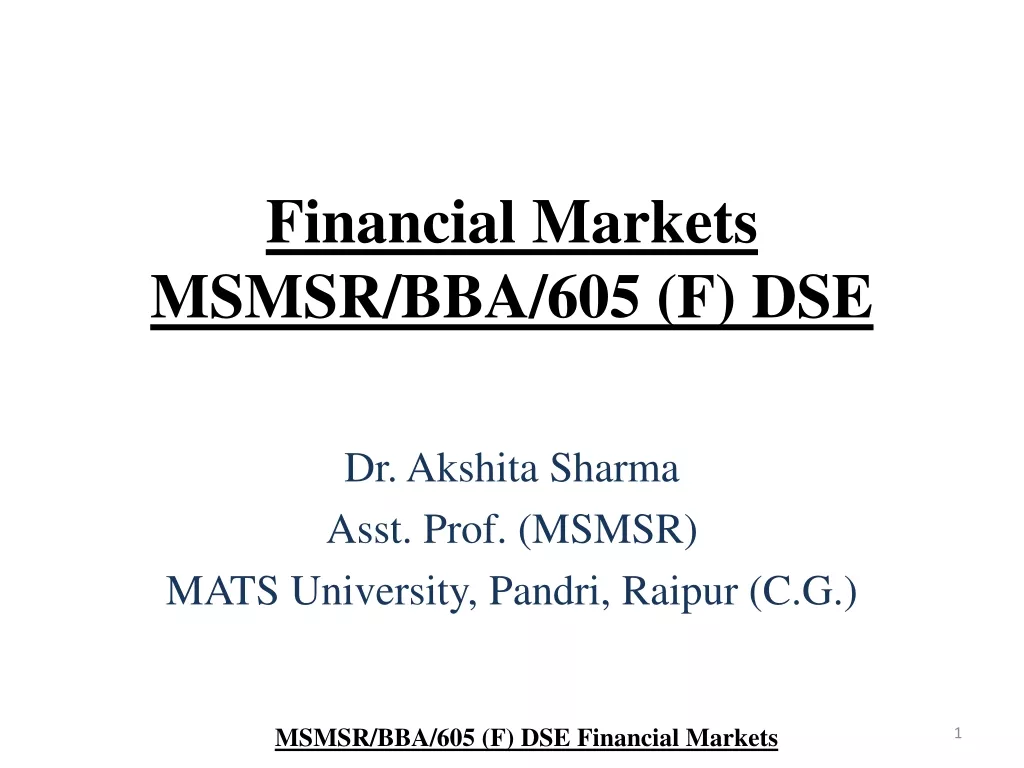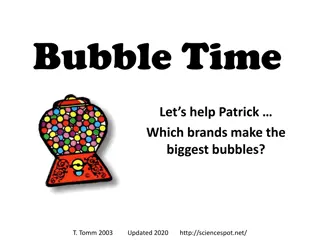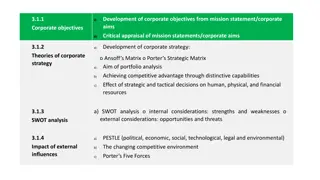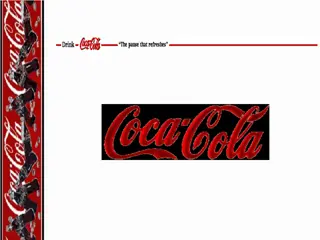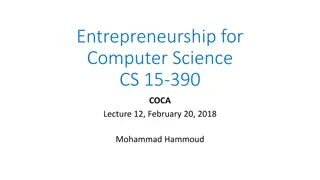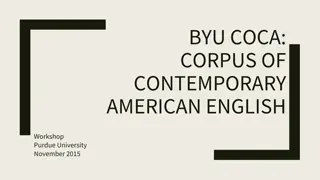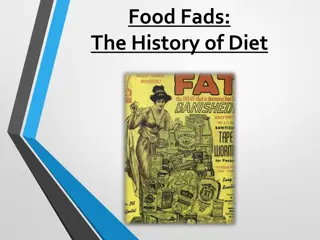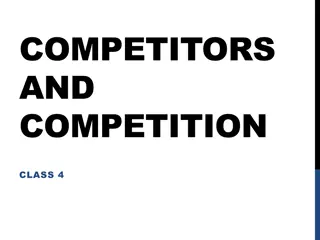Insights into Modern Markets: Chewing Gum, Coca-Cola, and Historical Survival
Explore the fascinating origins of chewing gum and Coca-Cola, how these products gained global popularity, faced challenges, and adapted to different markets. Learn about the significance of being the first in business through the example of railroad standardization.
Download Presentation

Please find below an Image/Link to download the presentation.
The content on the website is provided AS IS for your information and personal use only. It may not be sold, licensed, or shared on other websites without obtaining consent from the author.If you encounter any issues during the download, it is possible that the publisher has removed the file from their server.
You are allowed to download the files provided on this website for personal or commercial use, subject to the condition that they are used lawfully. All files are the property of their respective owners.
The content on the website is provided AS IS for your information and personal use only. It may not be sold, licensed, or shared on other websites without obtaining consent from the author.
E N D
Presentation Transcript
Ch6: Making Modern Markets Section 6.12-6.16 By: Kyle Hallman
6.12 Chewing on Global History Chewing gum originated from Mexico s Yucatan Penins0sula The chewy ingredient was Chicle from the Chicle tree Chicle was brought introduced to the American market in the 1860s by General Antonio Lopez de Santa Anna and Thomas Adams, an American inventor. The general hoped that chicle could be used to replace rubber, but the idea failed and Adams found an application for Chicle as chewing gum (Originally used a paraffin wax base) https://s1.qwant.com/thumbr/266x200/8/f/d77811396ea5f662695e462eed731a/b_1_q_0_p_0.jpg?u=https%3A%2F%2Fupload.wikimedia.org%2Fwikipedia%2Fcommons%2Fthumb%2F5%2F5c%2FPromotional_Chiclets.JPG%2F1200px-Promotional_Chiclets.JPGq=0b=1p=0a=0b_id=OIP.L7L7MSoCRmJLou9LGRXZuAHaFj
6.12 Chewing on Global History Chewing gum became popular for many reasons Pushed as a cure-all (Nervousness, Relieve thirst, reduce hunger pangs, etc.) Was considered ill-mannered, but it was accepted since the alternative was chewing tobacco. Other synthetic bases came to substitute Chicle as people wanted to blow bubbles. (Chicle did not make bubbles)
6.13 Coca-Cola Coke gained popularity in the late 1800s as a nonalcoholic beverage It was believed to be healthy by many, but some questioned this and Coke refused to release a list of ingredients. When the company tried to expand to Europe, this held them back European nationalist movements pushed back against Coke, saying that drinking wine or beer is what made you French or German. Drinking Coke diminishes that. After WWII, the Cold War era began. Communist newspapers would say that Coke had poison in it.
6.13 Coca-Cola Many European countries started banning Coke, fearing what was inside Since communists were involved in this matter, the American government gave a hand The American government dropped hints to France that financial aid may be in jeopardy if they continued to ban Coke This, along with the fact that American soldiers were frequently seen drinking coke, helped spread the product in Europe
6.14 Survival of the First In business, it s frequently the case that the first product introduced is the one that prevails. The railroad is an example of this. Railroads were first made with a 4-foot, 8-inch rail width for horse-drawn coal cars. When steam powered coal cars were introduced, they had to use this standard size. This standard 4-foot, 8-inch standard prevailed due to the need for standardized tracks. Newly developed technology also allowed for larger locomotives to fit on these narrow tracks
6.14 Survival of the First The railroad situation was different in the US however. There would often be unusual lines so people could monopolize regions It was only after the Civil War that the US adopted the British standard for 4-foot, 8-inch
6.15 It Aint Necessarily So Cans were invented in 1810 to help sailors preserve their rations better. An example of a necessary invention. It would take until 1870 for the invention of a can opener. In other circumstances, inventions are made before they become necessary. The first dishwasher was made in 1880, but most housewives did not have a problem washing their own dished, so the product didn t catch on until the 1950s when women entered the labor market.
6.15 It Aint Necessarily So The typewriter was first invented in 1829, but it was too slow, so it didn t really catch on Then there was the need to write down electric telegraphs, which were transmitted faster than people could write. This lead to a much faster typing machine in 1872: The Type-writer The machine had a jamming flaw, which could not be fixed and it was related to typing too fast. The solution to the problem was to make an extremely inefficient key layout, which is what we used today.
6.16 Location, Location, Location Andorra Andorra was not noteworthy up to the 1950s. It had a small population and its economy was still agriculture based. Power in the nation were divided between France and Span. Since 1954, its population went from 5,800 to 84,825 in 2011. Andorra has become so popular for being a free port and a major smuggling center. Being positioned between France and Spain, gives it a unique position for trade.
6.16 Location, Location, Location Panama Panamas prevalence came from its geographical location In 1903, the US, in the words of President Theodore Roosevelt Took Panama and began construction of the Panama Canal Panama City, due to its privileged location, has large business buildings and strong economy


